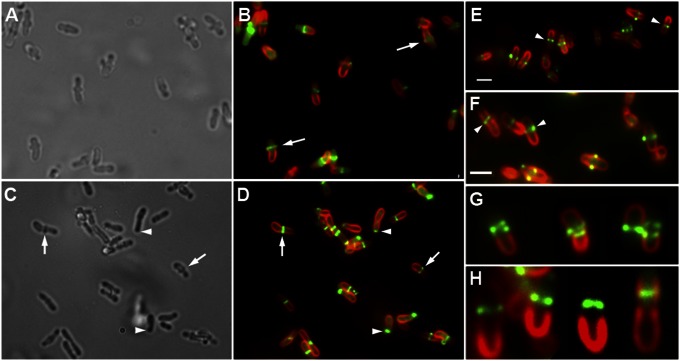Fig. 5.
Localization of FtsA-GFP and FtsZ-GFP in Agrobacterium grown in the presence of carbenicillin. (A) Bright-field image shows cells with midcell expansions after 20 h of Cb treatment. (B) Fluorescence image of cells in A reveals that FtsA-GFP localizes to regions of midcell radial expansion (arrows) but no longer localizes to growth poles (identified by lack of FM 4-64 labeling). (C) Bright-field image shows cells with (arrows) and without (arrowheads) initiation of midcell expansion after 4.5 h of Cb treatment. (D) Fluorescence image of cells in C reveals that FtsA-GFP localizes to regions of midcell radial expansion (arrows), but in cells without midcell expansion it localizes to the growth pole (arrowheads). (E and F) FtsZ-GFP and FM 4-64 fluorescence in two panels of cells. Cells accumulate FtsZ-GFP in presumptive Z rings at midcell expansion regions (arrowheads) but do not accumulate FtsZ-GFP at growth poles (with weaker FM 4-64 labeling). (Scale bars, 2 μm.) (G and H) Galleries of Cb-treated Agrobacterium cells with additional presumptive Z rings (G) or with the Z ring positioned toward the former growth pole (H).

